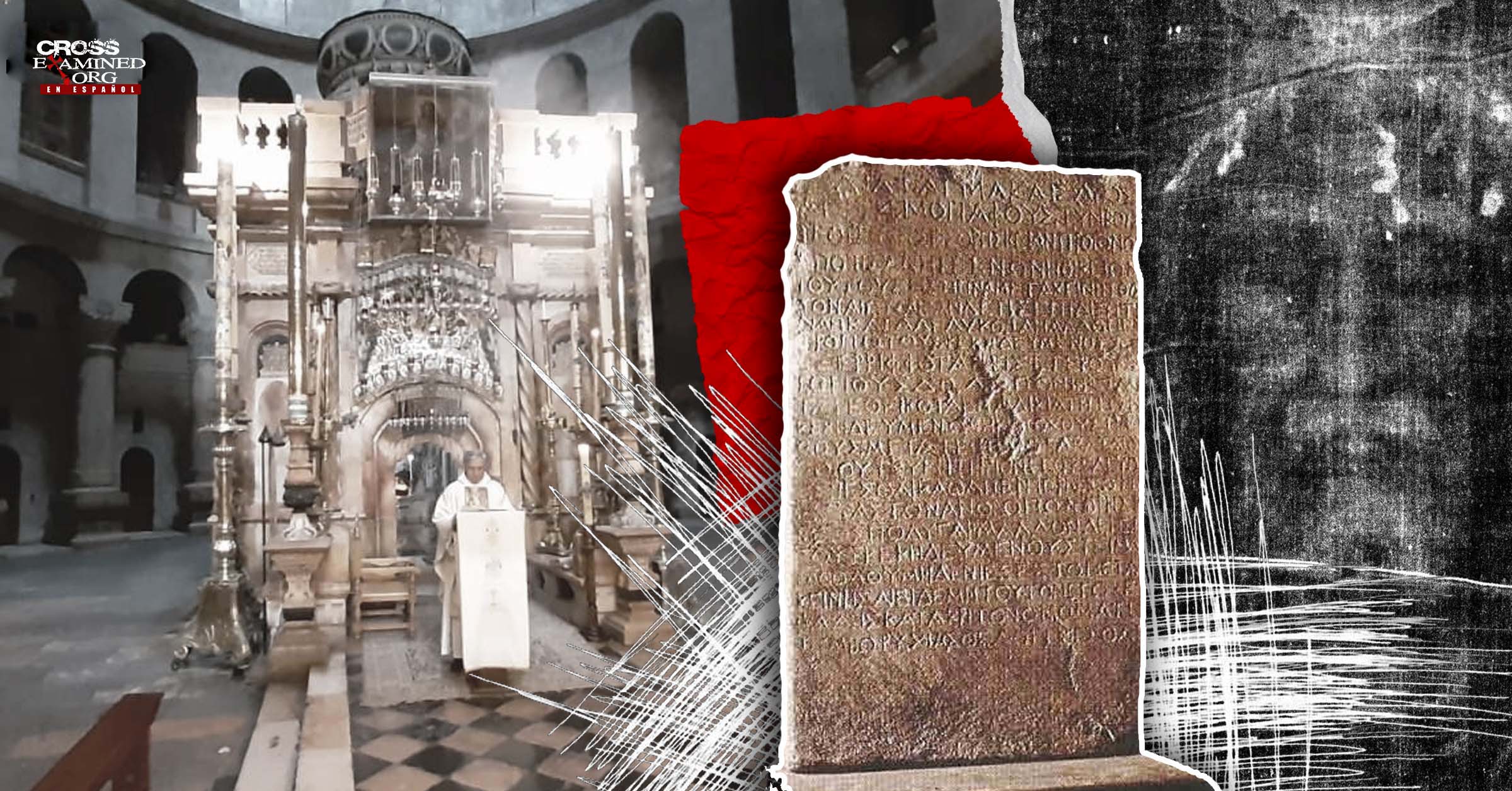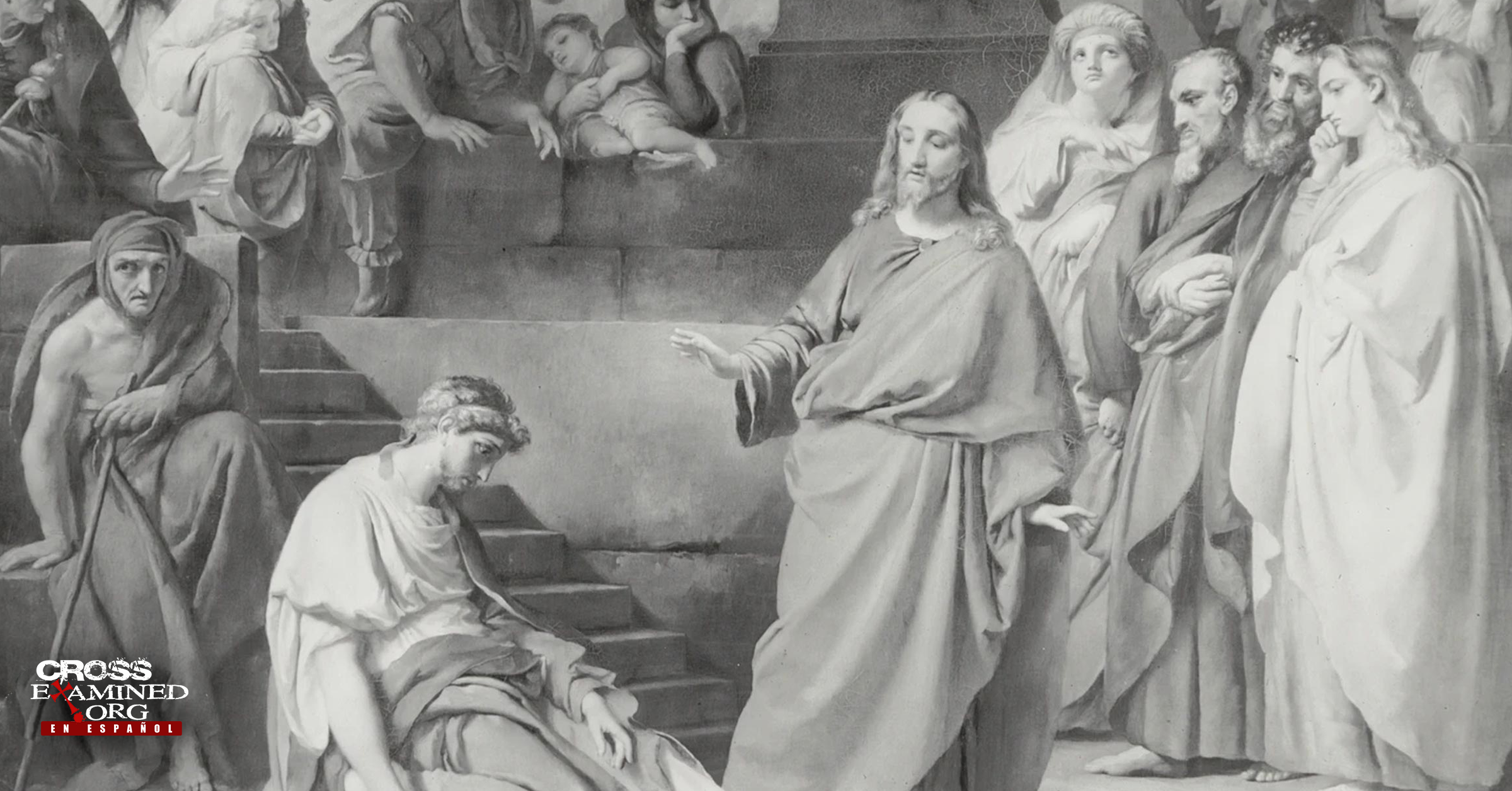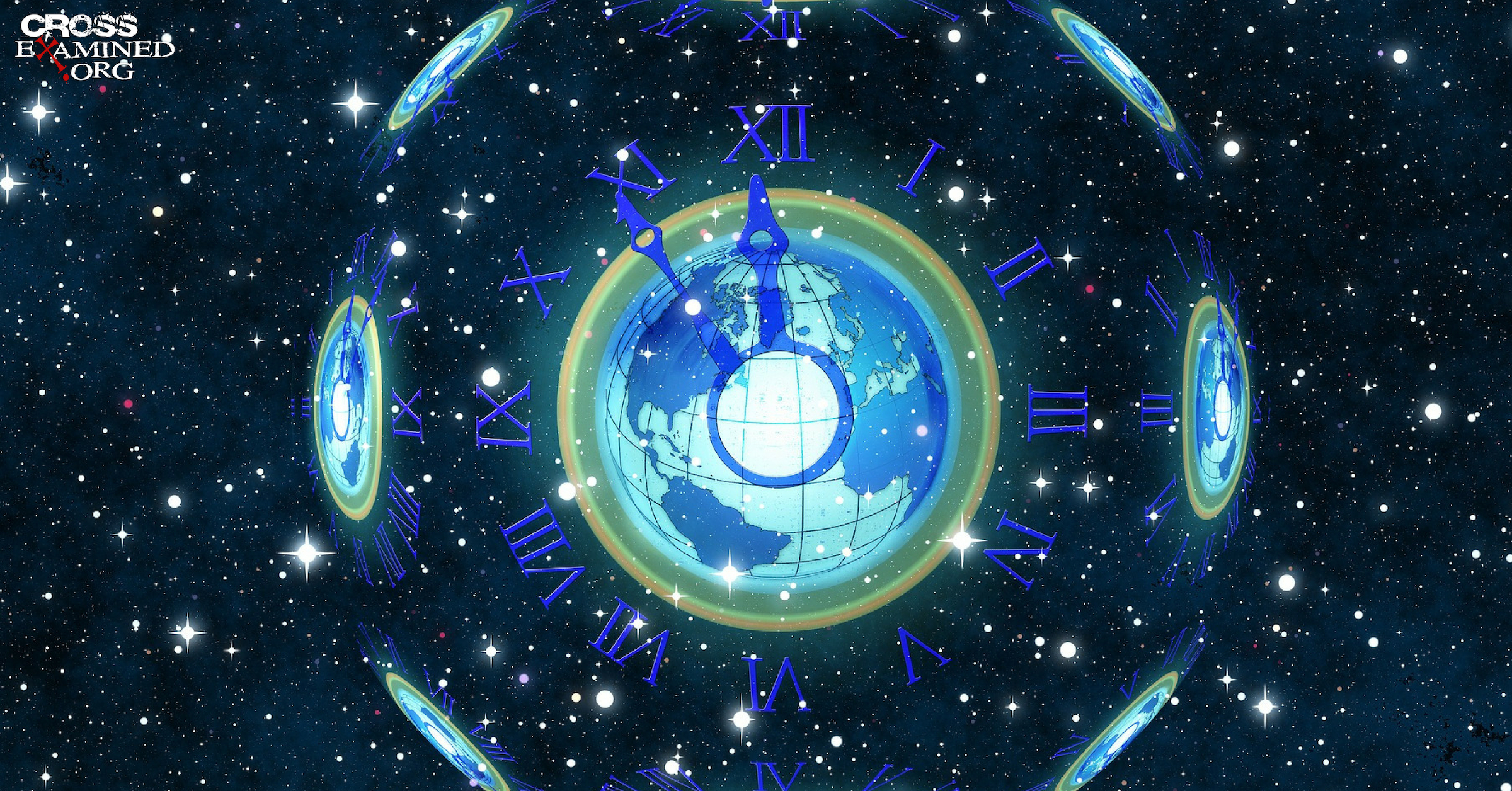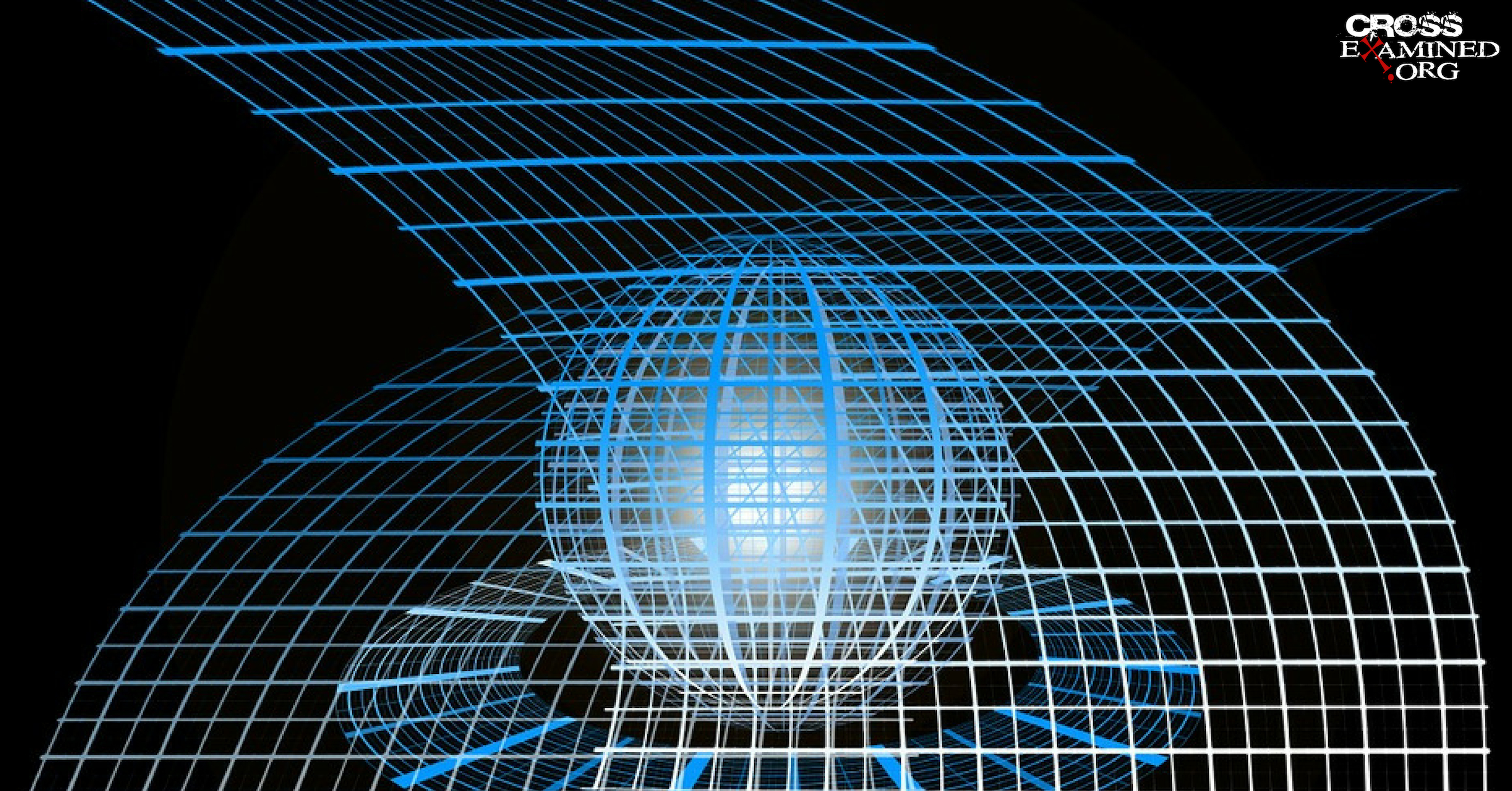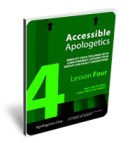Por Andrew Cowley
Cuando tenía 14 años, negaba públicamente (y con sinceridad) la existencia de Dios. Estaba totalmente convencido de que Dios no existía y que los que creían en Dios eran ilusos, poco inteligentes, ingenuos y emocionalmente débiles. Creer en Dios era cosa de cuentos de hadas, —no algo intelectual o racional. Como ateo, me subí en los hombros de gigantes como Sam Harris, Richard Dawkins y Christopher Hitchens. Me deleitaba con la idea de que estaba en todo mi derecho de hacer comentarios sarcásticos a los creyentes y de reírme con orgullo cuando un creyente decía que tenía “fe” en lo que creía. ¿”Fe”? Eso es tema de niños y Papá Noel, ¡no para el intelectual moderno que se basa en la evidencia empírica y la lógica!
Un mes después de que cumpliera 28 años, comencé a leer de manera objetiva y con una mente abierta, libros sobre la resurrección, el cristianismo histórico y la apologética cristiana.
Algo curioso ocurre cuándo empiezas a mirar objetivamente y aprendes sobre el tema que con vehemencia has criticado y descartado sin pensarlo dos veces… Empiezas a notar cosas que nunca encontrarías en el New York Times, en la entrada/publicación de un blog escrito por un Objetivista, o en un meme que se ha compartido miles de veces en Facebook que afirma que Jesús es sólo una imitación de ese dios pagano que existió hace mucho, mucho tiempo. Empiezas a darte cuenta de las pruebas históricas que parecen apuntar a la misma conclusión una y otra vez. Empiezas a leer libros de historiadores antiguos que no tienen nada que ver con los autores de la Biblia, pero aún ellos hablan de alguien a quien llaman “Jesús” y de lo que un grupo de “cristianos” han estado haciendo desde su muerte y resurrección[1]. Libros como The Resurrection of the Son of Man (La Resurrección del Hijo del Hombre) de N.T. Wright parecen de repente obras brillantes de investigación histórica que no sólo pueden refutar las afirmaciones vacías de que Jesús no era único, sino que sientan una base incuestionable de por qué la resurrección de Cristo fue un hecho real que tuvo lugar y es la mejor explicación de porqué los más cercanos a Cristo vivieron y murieron por Él. Los libros de la Biblia ya no parecen ser piezas tomadas de cuentos de hadas, son pedazos de historia que pueden ser atestiguados por las personas que realmente estuvieron allí. Los autores de la Biblia son como los testigos oculares independientes (y testigos que realmente hablaron con los que allí vivían) que son fiables y precisos.
Fue extremadamente difícil dejar de lado mis prejuicios y ver la evidencia como lo que era: la Biblia es un documento histórico escrito por personas de carne y hueso que experimentaron cosas reales. Jesús realmente vivió y caminó en esta tierra, tuvo cientos (si no es que miles) de seguidores que fueron torturados y asesinados por creer que Él era el Hijo de Dios, y escribieron sobre ello. La Biblia (y más específicamente, el evangelio) fue escrita por personas que verdaderamente estuvieron allí. De hecho, San Pablo reta a todos los que dudan al decirnos que si no le creemos a él, vayamos y preguntemos a los cientos de personas que estuvieron allí. Seguramente estarán de acuerdo con lo que él te está diciendo.[2]
Y éste es el gran reclamo para “los cuentos de hadas” y es que no creas en algo que no puede comprobarse. No olvidemos que San Pablo persiguió activamente a los cristianos y habló en contra de Cristo antes de su conversión. En otras palabras, San Pablo no quería creer en las afirmaciones de Cristo, pero no pudo negarlo una vez que lo vio, y lo experimentó por sí mismo. Esencialmente, Pablo odiaba a Cristo y a sus seguidores, pero no pudo hacer otra cosa excepto creer.
Aunque, debo admitir, que creer en la resurrección parece ir en contra de lo que experimentamos día a día. La gente no resucita de entre los muertos, al menos no en nuestra experiencia. A medida que lees sobre la vida, la muerte y la resurrección de nuestro Señor y Salvador, empiezas a cuestionar seriamente lo que es o no es posible. Para alguien que afirma ser Dios, más le vale que tenga un argumento —y una prueba— asombrosa de por qué debemos creerle. Después de todo, cualquiera puede afirmar ser Dios y decir que resucitó de entre los muertos, —pero la afirmación por sí sola no la convierte en verdad. Bien se dice “Las afirmaciones extraordinarias requieren pruebas extraordinarias”.
Acertadamente, Cristo entendió esto y reconoció nuestro escepticismo. Cristo sabía que tendría que haber una prueba innegable de que era el Hijo del Hombre y de que había cumplido todo lo que se había propuesto. Cristo no sólo resucitó de entre los muertos (tal como había prometido), sino que reveló públicamente su cuerpo resucitado para que todos lo vieran. Con todo y eso, algunos de los discípulos no podían creer lo que veían[3] —francamente, no los culpo. Ver a Cristo en su forma glorificada debió ser verdaderamente aterrador y gozoso a la vez. Pero, Cristo disolvió toda duda. Les dijo que tocaran su cuerpo y sintieran sus muy reales heridas. Ni siquiera el mejor estudio científico en las mejores circunstancias puede aseverar el tener una prueba tan innegable como la que ¡experimentaron! los discípulos (y muchos otros).
Después de las apariciones de Cristo, nadie pudo convencer a los testigos de otra cosa que no fuera creer que Cristo mismo se les apareció en un cuerpo glorificado y resucitado. Ni la tortura, ni la muerte, ni la ejecución pública, ni ninguna otra cosa pudo hacerles cambiar de parecer. Ellos sabían lo que vieron, y lo que vieron realmente sucedió.
Pienso que una objeción totalmente válida a considerar es que los discípulos mintieron sobre haber visto a Cristo resucitado. Sin embargo, deberíamos preguntarnos: “¿Por qué alguien se aferraría a una mentira sabiendo muy bien que lo matarían por sostener esa mentira?”.
Ten en cuenta que no había nada que ganar, pero sí todo que perder, al sostener tal mentira. Piensa en esto por un momento… ¿Sostendrías una mentira que sabes a ciencia cierta que no sucedió, si te enfrentaras a una muerte y tortura segura? Yo no lo haría y me cuesta creer que alguien lo haga.
Sin embargo, no es lo mismo cuando alguien muere por sostener sus creencias(es decir, morir por alguna causa). No se puede confundir a alguien que muere por un hecho que sabe que no ocurrió con alguien pierde la vida por una creencia personal. Espero que puedas ver la diferencia entre estos dos escenarios. La sinceridad de los discípulos (y de los cristianos posteriores) más la conversión de Pablo son un testimonio de lo poderosa que es esta afirmación histórica, la cual demuestra que la resurrección de Cristo es en verdad la mejor explicación, —especialmente si se tiene en cuenta el trasfondo histórico de los relatos.
No soy cristiano porque quiera serlo, soy cristiano porque no tengo otra opción. Dios me ha llamado a su rebaño y he respondido a ese llamado con todo mi corazón, mi mente y mi alma. Mi oración sincera es que todas las personas puedan escuchar ese llamado también.
Notes
[1] Jewish Antiquities, 18.3.3 §63
[2] 1 Corintios 15:5-8
[3] Juan 20:24-29
Recursos recomendados en Español:
Robándole a Dios (tapa blanda), (Guía de estudio para el profesor) y (Guía de estudio del estudiante) por el Dr. Frank Turek
Por qué no tengo suficiente fe para ser un ateo (serie de DVD completa), (Manual de trabajo del profesor) y (Manual del estudiante) del Dr. Frank Turek
______________________________________________________________________________________________________________________________________________
Andrew Cowley obtuvo su Licenciatura en Filosofía en la Universidad de Utah, sirvió en el ejército de los Estados Unidos y es un prolífico autor. Quien antes fuera un ateo devoto, ahora sirve a Cristo y se aferra a la promesa que brinda el evangelio.
Blog Original: https://cutt.ly/DI4GoS0
Traducido por Mónica Pirateque
Editado por Gustavo Camarillo



